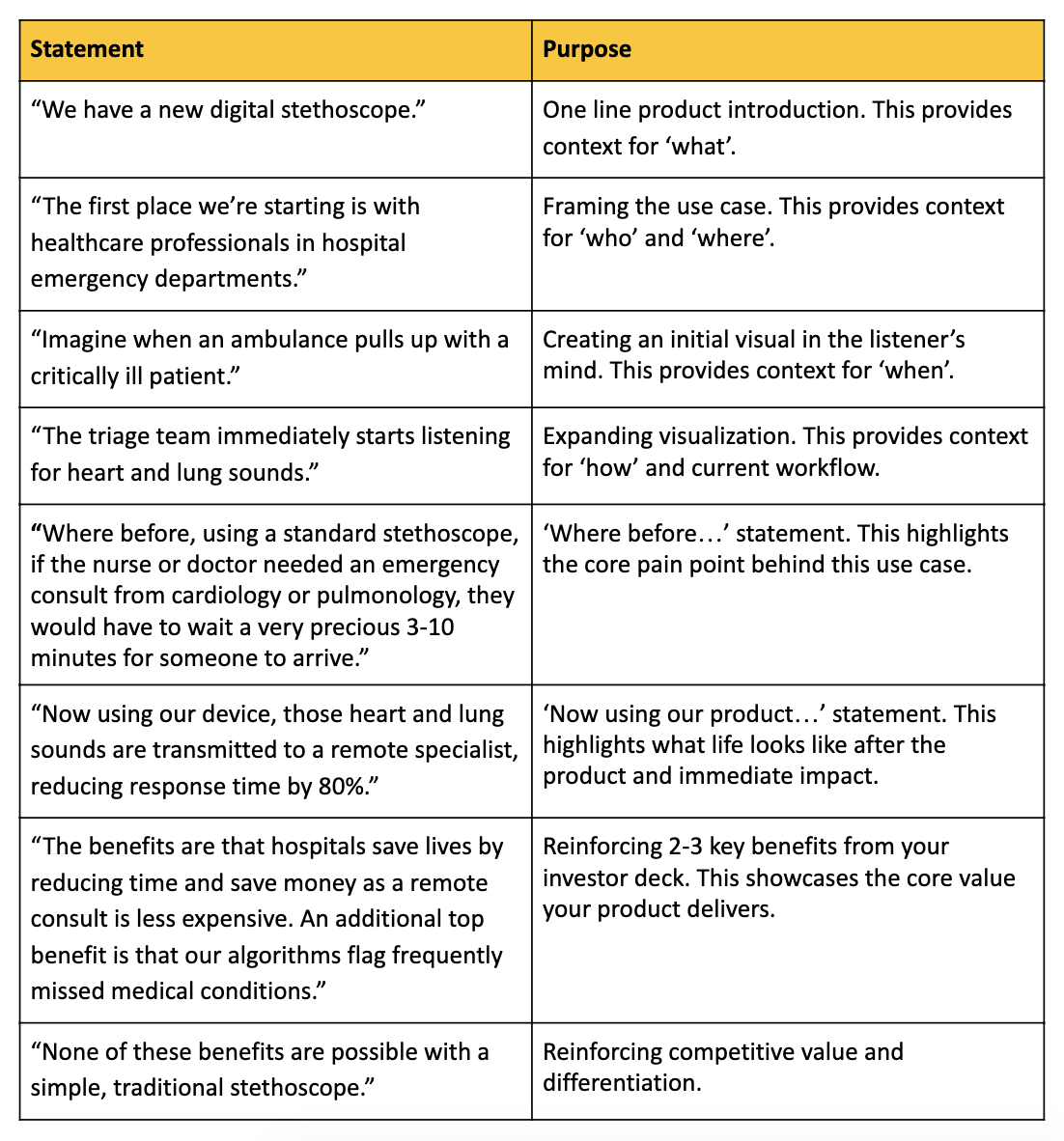How to CRUSH Your Demo When Pitching
Good founders know the importance of nailing their product demo. Nicholas Negroponte, Founding Director of MIT Media Lab, famously coined the term, “Demo or die.” While many demo, few excel at it. In this #DreamitDose, Managing Partner Steve Barsh gives founders a simple framework to crush your demo. This article will highlight:
Setting the right goals for your demo
Before you begin presenting, ask yourself: What am I trying to accomplish with my demo? Make sure your demo highlights how your product solves a big and urgent need, which is the most critical element of your investor pitch. The beginning of your demo needs to immediately reinforce core value and problem-solution fit.
Using use cases to highlight core value
Use cases help convey the value of your solution. Steve suggests focusing on your top 2-3 use cases when demoing your product. Get specific when describing your use cases and avoid broad generalities. Each use case should follow a “day in the life of” format for the user or primary character. This format describes the user’s journey through “where before... now by using our product...” statements. Here’s a short example:
Where before: 24% of elderly and non-tech-savvy patients fail to set up/pair remote monitoring devices in population health management programs.
Now by using our product: Our hub automatically pairs remote monitoring devices for non-technical patients and sends all their remote patient data seamlessly back to the health system’s electronic medical record. By removing this friction, large health systems increase care plan adherence by 30%, decrease 30-day readmission rates by 19%, and accrue an average of $125k in cost reduction from increased labor efficiency of population health care teams.
Don’t use pronouns like he/she/they when describing your users. Name people in your use case like actors in a play (e.g. the doctor, the cardiac patient). This will alleviate confusion with investors and demonstrate your deep understanding of the user experience.
Aligning the key benefits and differentiators from your pitch deck
It’s important to note that “now by using our product...” statements end by tying the use case back to the product’s core benefits. Your demo should prioritize highlighting benefits over features. Examples of core benefit types include time savings, decreased cost, increased revenue, solving pain points, or adding capability. How do you know which benefits to highlight? Start from the top and pick the benefits that contribute most to the core value you deliver.
The competition slide of your pitch deck should list the same benefits that your demo highlights. On this slide, Steve suggests listing benefits and differentiators in order of importance. Your demo is an opportunity to crystalize your key benefits and differentiators. Suggested reading: How to Create a Killer Competition Slide.
Weave in traction when describing benefits. For example, if my use case highlights labor savings, I’d make it a point to name 2-3 key customers who bought primarily for that benefit. This makes your story more believable and teases your more in-depth traction slide.
An example of a compelling demo
Click the play button below to hear a short and digestible real-world use case demo. While listening, you can follow this framework line by line using the table underneath.
Related Content
By Elliot Levy, Healthtech Associate at Dreamit Ventures
Subscribe to Dreamit’s Podcast on Apple, Google Podcasts, or Spotify
Learn more about Dreamit Healthtech, a growth-focused program for digital health and medtech startups with revenue, pilots, or early product-market fit.





